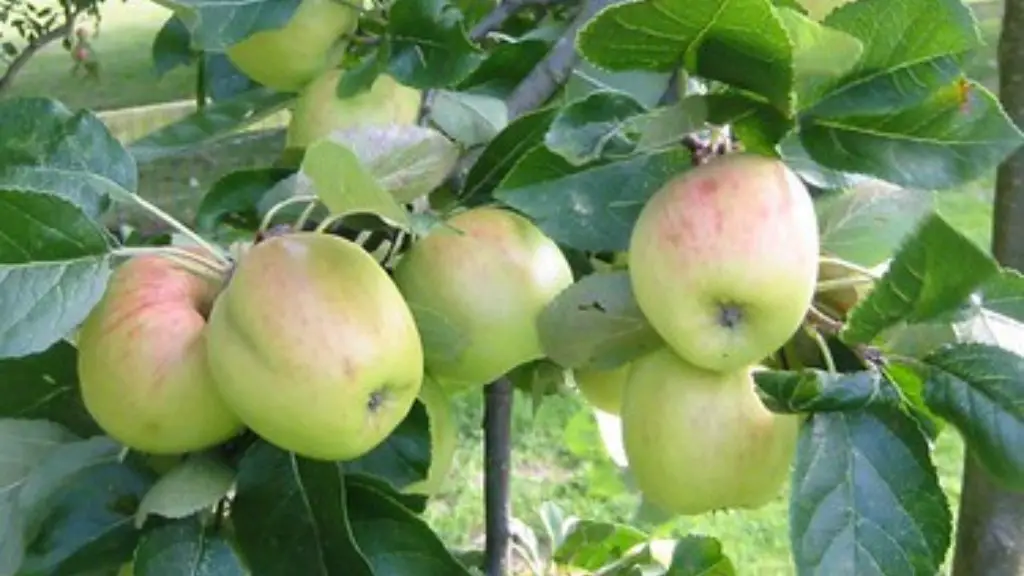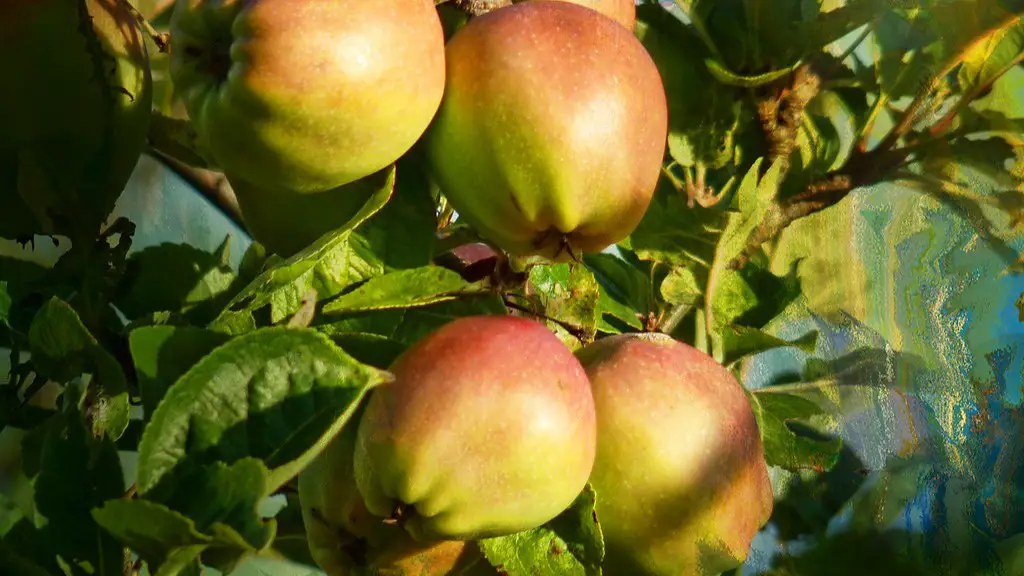Avocado trees are a popular choice for many gardeners, and partly that’s because it’s surprisingly low-maintenance for such a rewarding type of tree. The key to getting a great harvest of avocados is water – not too much, not too little. In order to get the perfect balance of moisture, understanding how to water the avocado tree, when to water the tree, and how and when to adjust that schedule is important.
Avocado trees need around one inch of water per week. That one inch is split into two parts – the first half is put down at the beginning of the week and the second half at the end. This helps to make sure that the soil is evenly moist and adequately soaked.
For established avocado trees, the summer months are a perfect time to apply water generously. The summer heat and dry air can easily draw moisture out of the soil, making it necessary to give avocado trees more throughout the hottest months of the year. During this time, it’s essential to pay attention to the soil or else the trees could become damaged from lack of water.
It’s important to remember though, too much water can be just as damaging to an avocado tree as too little water. It’s best to be mindful of water needs and make sure the soil doesn’t become waterlogged under any circumstances. Even with extra water in the summer months, avocado trees need about the same amount of water each week for the best results. To avoid over-watering, look into a soil moisture meter. This will help to measure accurately how moist the soil is, compared to if a gardener were to just guess.
It’s always useful to research the region that the avocado tree is growing in and what type of conditions and weather is typical, as different climates can have different water needs for the best health of the tree. For instance, if an avocado tree is being grown in a drier climate, like a desert region, then it’s best to check on the tree more throughout the summer, as not enough water can cause a dead tree.
Trees in Growth
If the tree is still in the early stages of growth and planting, then special attention should be paid. Young trees need more water while they’re growing because they’re not as established as older trees and are more vulnerable to dry soil. Adequate watering will be important at this stage as it encourages strong root development and healthy new growth.
This section of caring for an avocado tree is also important because it trains the tree for what’s to come in later years. While in growth, trees need specific amounts of water and if an avocado tree gets the proper amount, it will naturally expect the same amount in future years.
Watering an avocado tree too often or too little can easily increase the risk for disease or pests. Too much water causes leaves to become soft and yellow, and this can invite in harmful fungi that live in moist environments, such as root rot. If a tree has too little water, trees can become stunted from severe dehydration or develop dry spots and wrinkles due to sunburn.
In order to guarantee a healthy, lush avocado tree, it’s best to water it properly. Build a routine and calendar that works best with the area and climate the tree is grown in, and stick with the one inch per week rule. Avocados are an amazing fruit to enjoy, and with proper watering, gardeners can experience the rewards a tree provides.
In Hot Climates
In climates with very hot and dry summers, special care will be needed when watering an avocado tree. During these months, if rainfall is sparse, extra water will be needed, as the lack of moisture can severely harm the trees. Gardeners should check before and after rainfall to make sure the soil is damp enough for the tree to stay healthy.
For avocados in hot climates, it’s important to remember to water more than once a week. To help keep the soil moist, put down ¼ inch of water three to four days out of the week. If unsure if the tree has enough water, use soil moisture meters to measure the soil’s humidity. This tool will help make sure that the tree isn’t over or under-watered.
Adequate water is also important for any flowers that may be on the tree. It’s essential for pollination and fruit production as the flowers could become wilted and fall off in the heat if not given proper moist soil. Additionally, if a tree is planted in a drought-tolerant soil, like a cactus and succulent blend, then watering it once a week will be enough to keep it healthy in the heat.
In Cool Climates
In cooler climates, avocado trees usually don’t need as much water because there is typically more rain, helping to water the soil naturally. In these areas, it’s best to water the tree two times a week – once in the beginning and once at the end. This should suffice as a way to supplement the natural rainfall, while making sure the soil is getting enough to keep the tree healthy.
In climates that receive lots of cold, wet air, gardeners should be aware of root rot, as cold temperatures can cause fungus and bacteria to grow in the soil, damaging and killing the tree. To prevent this, make sure the soil is never waterlogged and always drained to prevent fungi from living in the wet soil. Additionally, it’s best to water only until the soil is slightly damp and that’s it.
Overall, temperature, sun, and rainfall play a large factor in the watering needs of an avocado tree. Knowing the local conditions and understanding the tree’s needs are essential when it comes to watering. Avocados are a tree of great reward and by providing it with the best care, gardeners have the potential of harvesting a great crop of delicious fruit.
Letting the Soil Dry
One great piece of advice for watering an avocado tree is to give it one deep water cycle per week. Water the tree so it is adequately moist and then let the soil go dry until the next cycle is due. This will help condition the tree’s root system to adjust to having dry soil in between watering, rather than always having the soil saturated.
By letting the soil dry out, air can still be in it and the tree can still stay hydrated through oxygen. Trees that are always watered and never have time for the soil to dry will find it hard to survive in conditions with less growing water access as the tree won’t be conditioned to that lifestyle.
It’s important to remember though, letting the soil dry out too much is just as damaging as too much water. During cycles of no water, keep an extra eye or two to make sure the soil isn’t becoming too dry and that the tree isn’t wilting too quickly. Soil moisture meters will be a great help for this fact.
On average avocado trees can handle a two to three week dry cycle, but this can easily be adjusted to fit the conditions of the local area and climate. When water days do come, make sure to give the tree enough water so that the soil is adequately moist and that there is no hard and dry dirt in the roots area.
Providing Nutrients
When watering an avocado tree, it’s important to make sure the tree is getting enough nutrients as well. Trees need the right amount of minerals and fertilizer to stay healthy, and this is related to the water it drinks in. When the water gets used to help the tree grow, so does the minerals and fertilizer in it. That’s why it’s important to use a soil fertility schedule to ensure the tree is getting the right combination of water and nutrition.
In addition to the frequency of watering and soil fertility schedule, it’s essential to use water-soluble fertilizers. This fertilizer easily dissolves in water and the nutrition can be directly absorbed from the water into the tree. This is different from inorganic fertilizers, which require liquid or solid mixing and take time to get into the soil and roots.
Netting and mulch can also be a great benefit when it comes to water and fertilizer. Netting helps to keep soil moist by trapping water and air underground, and mulches help to prevent get rid of excess water as it can absorb and retain moisture for longer periods of time. By combining these with the water-soluble fertilizer, an avocado tree can get the perfect amount of hydration and nutrition it needs.
Dry Winter Months
During the winter months, when rainfall is usually less, it’s important to adjust the watering schedule properly. Avocado trees need water to survive, but too much water in freezing temperatures can do more harm than good. Gardeners should practice the two to three week dry cycle, but also keep an eye out for drought signs. These could include wilting leaves, yellowing leaves, and dry soil.
In a cold winter climate, it’s best to keep the watering to even less – only once per month and at the roots. Make sure to also use soil moisture meters to measure the ground, giving an accurate measure of the wetness and dryness of the soil. As long as the tree receives an adequate amount of fertilizer, the number of waterings can be cut back to once per month.
Although a tree needs to be cared for in winter, it’s important to watch out for over-watering. During the winter months, wet soil can cause the roots to rot, as cold weather and fungus can easily take hold. Instead, watering every four to five weeks can be just enough to give the tree enough to survive the winter.
Hand-Watering
It may be more helpful to water avocado trees by hand, rather than relying on sprinklers or a general garden hose. This will help gardeners to focus the water exactly where it needs to go. Targeted water is especially helpful when it comes to avocado trees, as they need to be watered directly around the base of the trunk near the roots.
In order to manually water, gardeners should attach a soaker hose to the tip of a regular hosepipe and then spread the hose around the base of the tree, in a circle. The soaker hose should be about 2-4 inches away from the trunk and be connected for about 15 minutes at a time.
Make sure the soil isn’t getting too saturated and that the water isn’t running off or getting onto the leaves. If possible, area boundaries can be set up around the tree with wood or cloth that way water won’t spread too far. This can help to focus the water directly on the tree, avoiding any overflow.
To stop the water from overflowing, you can also use a landscape structure or just well-placed rocks to create a border. If eventually opting for a sprinkler system, it’s best to opt for one that can be adjusted to water around the base of the tree, and not the trunk.
Conclusion
Watering an avocado tree is essential in order to help a tree thrive and bear massive amounts of fruit. Understanding the local climate, rainfall and temperature will help gardeners know when to adjust watering habits, as well as how much water is needed. It’s best to follow the one inch per week rule and then take into account additional factors based on the site of the tree.
By utilizing hand-watering, soil moisture meters, and a well-planned soil fertility schedule, gardeners can create the perfect set-up for an abundance of avocados for years to come. With proper maintenance and an eye for detail, an avocado tree has the potential of providing a great harvest of fruit for any gard




